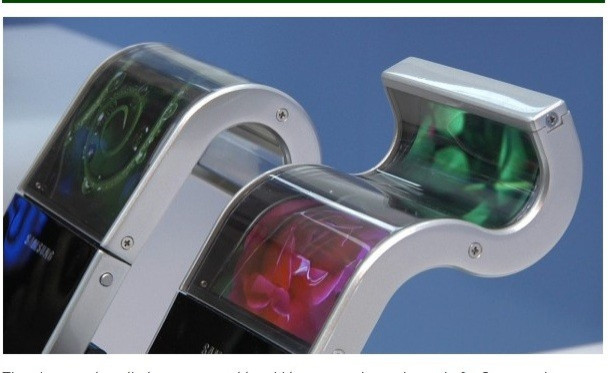Flexible Batteries For Smartphones? Scientists Invent Stretchable, Wirelessly Chargeable Lithium-Ion Battery

Tech companies want to build smartphones that can stretch, twist and fold, so scientists have been working on developing components that are equally flexible. On Wednesday, scientists from Northwestern University and University of Illinois announced they have created a lithium-ion battery that can stretch up to 300 percent of its original size and still function.
After years in development, Yonggang Huang of Northwestern University and John A. Rogers of University of Illinois demonstrated how their battery invention can consistently power a commercial LED, even when twisted, folded and contorted around a human elbow.
"We start with a lot of battery components side by side in a very small space, and we connect them with tightly packed, long wavy lines," Huang said in a statement. "These wires provide the flexibility. When we stretch the battery, the wavy interconnecting lines unfurl, much like yarn unspooling. And we can stretch the device a great deal and still have a working battery."
If this invention wasn't appealing enough for smartphone makers already, the stretchable battery can be charged wirelessly, which means the device can be implanted in any kind of innovative consumer electronic or even inside the human body.
The two Midwest-based scientists have been working together for the past six years, trying to build various types of flexible and stretchable electronics parts. When the pair focused on a stretchable electronic circuit, they first developed a space filling technique called "pop-up" technology, which basically involves making a batch of tiny circuit elements connected by "pop-up bridges" made of a metal wire. When the circuitry would be stretched in any way, the wires -- not the static circuits -- would "pop up," hence the name.
While this technique worked on a circuit, the scientists had no such luck applying it to a stretchable battery -- simply, there just isn't enough space between components in a battery to allow for "pop-up" technology to really work. But that's when Huang had the idea to change the shape of the metal wire to make it fill the small space between battery components; in the end, the line connecting the components looks like a large "S," with many smaller "Ss" within that shape.
The finished mechanism works like a "spring within a spring": When the battery is stretched in any way, the large "S" metal wire stretches out -- so do those little "Ss" -- until the wires connecting the electrodes is fully taut.
"We call this ordered unravelling," Huang told the journal Nature Communications. "And this is how we can produce a battery that stretches up to 300 percent of its original size."
The stretching process is reversible, so manufacturers won't need to worry about bending the battery out of shape. The scientists say their battery can work for eight to nine hours before it needs to be recharged.
The entire study is available to read on Nature Communications' website.
© Copyright IBTimes 2024. All rights reserved.






















